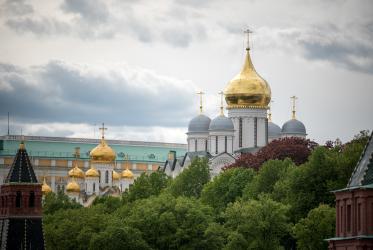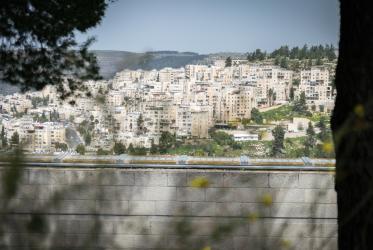After 50 years of occupation, Palestinians in the Holy Land haven’t given up their hopes for freedom. Still, Palestinians – and many Israelis as well – hope. They hope that a nonviolent solution to the conflict will come, and that both peoples eventually will live together in peace and reconciliation.
“Hope” is also the theme of the World Council of Churches’ (WCC’s) campaign “Seek#JusticeAndPeace in the Holy Land” which was launched in June to remind the world about 50 years of occupation and injustice. It is a social media- and WCC web-campaign where 12 people from different backgrounds representing all three religions share their concerns and their prevailing hopes for change. Alongside that, compelling quotes related to the history of the Holy Land, are featured as “50 moments of Justice and Peace”.
“The response so far has been positive and we’ve seen a clear increase in traffic in our digital channels”, says Marianne Ejdersten, director of communication at the WCC.
Initially, the campaign is visible in social media and on the WCC website, but from September and onwards, it will be complemented with public exhibitions in key cities around the globe. The first such exhibition will take place at the Ecumenical Centre in Geneva during the World Week of Peace in Palestine and Israel (WWPPI), which starts the 17th of September. By then all 12 faces and all 50 moments in the campaign will have been published one-by-one on Facebook, Twitter and Instagram. On the WCC website, the entire campaign has been visible from the start.
“We are anxious to maximize the impact of the campaign by a timely coordination of activities and channels. The WWPPI offers a good opportunity to revive strong messages and reach out further”, says Ejdersten.
She is confident that the diverse expressions of hope conveyed in the campaign will help raise awareness about the ongoing occupation and the sad realities for the Palestinian people.
“The messages these 12 people share are really touching and the fact that they come from Christians, Jews and Muslims alike makes it even more compelling. Equally important, from a communications point of view, is the professional design of the campaign and the fabulous photography by Paul Jeffrey”, Ejdersten explains.
“We are all peace-makers,” said Ejdersten. “Communication for just peace is all about our attitude. The worst barriers to peace can be words and the way we tell our stories, in a way that we do not understand each other. To do communication for just peace, you need to keep your eyes, ears and heart open, monitor what is happening, expect the unexpected, travel to unusual places and speak to those who are most affected by the situation,” she said.
These qualities will also permeate the exhibition package, which includes framed posters, tapestries, slide shows, folders and other printed material. Everything is scalable to suit different needs and venues.
“The ideal setup is to combine the exhibition with a peace panel of knowledgeable people discussing the situation in Palestine-Israel. The WWPPI is of course a splendid opportunity for that, but it doesn’t necessarily have to coincide. The important thing is to use the campaign material in a context where it makes sense and has an impact”, Ejdersten concludes.
For more information on "Seek #JusticeAndPeace in the Holy Land”
World Week of Peace in Palestine and Israel
WCC in solidarity with member churches in the Middle East
For more information on the material: [email protected]






